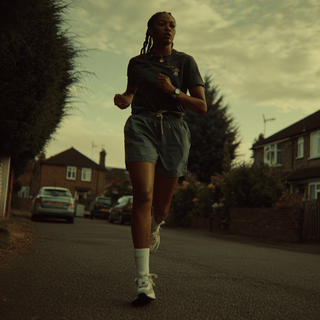In recent years running has begun to grow in popularity with it being one of the ways to improve your fitness, clear your mind and enjoy the outdoors. Unlike many other workouts, you don’t need complicated equipment, just a good pair of shoes, comfortable clothing and a willingness to put one foot in front of the other, it couldnt be said any easier.
Whether your goal is better health, weight loss or simply finding a new hobby, this guide will help you take your first steps safely and confidently.
Why start running?
Regular running does more than burn calories. It’s a weight bearing activity, which means it helps build strong bones and strengthen muscles. Running also improves cardiovascular fitness and can help maintain a healthy weight. Many people notice improved mood and reduced stress after a run because aerobic exercise like running can triggers the release of feel‑good hormone endorphins. These benefits make running an excellent choice for long‑term health.

Begin slowly with run/walk intervals
Jumping straight into continuous running often leads to exhaustion or injury. Most beginners do better with a structured plan that alternates running and walking. The NHS Couch to 5 K programme, for example, guides you over nine weeks, building up to 30 minutes of continuous running. It also recommends three runs per week with rest days in between.
Here is interval you can use to help you start running.
- Start with a light jog for 60 seconds.
- Follow with a brisk walk for 90 seconds.
- Repeat the jog or walk cycle for 20–30 minutes.
- Each week, increase the running segments slightly while reducing walking time.
- Continue until you can run comfortably without breaks.
Set small goals and track your progress
Setting achievable goals keeps you motivated. Instead of worrying about speed or distance, focus on consistency: complete three sessions per week for three weeks, then increase the total running time. Many beginners find it helpful to use a journal or app to record their runs, noting how they felt and any aches. Celebrating small milestones, completing your first 5 K or running for 10 minutes without stopping,builds confidence.

Invest in the right gear
While you don’t need a wardrobe full of kit, comfortable clothing can make your runs more enjoyable. Choose leggings or shorts that don’t ride down, and tops made from breathable fabrics that wick sweat away. 9 Elephants offers durable, high‑waisted leggings and soft gym T‑shirts made from recycled materials that are designed to stay put during movement. A supportive pair of running shoes is also essential; visit a specialist running store to find a shoe that suits your gait.
Safety tips for new runners
Start each session with a five‑minute warm up gentle walking, leg swings or dynamic stretching. This prepares your muscles and reduces injury risk. Hydrate well by drinking 6–8 glasses of fluid throughout the day and around 400 to 600 ml of water 2 to 3 hours before you run. Listen to your body: slight discomfort is normal when trying something new, but sharp pain or persistent soreness indicates you should rest or see a healthcare professional. Finally, give yourself at least one rest day between runs to allow muscles and bones to adapt.
Final thoughts
Starting your running journey is as much about patience as it is about perseverance. By building gradually, wearing comfortable, sustainable gear and celebrating small wins, you’ll lay a solid foundation for a long term love of running. When you’re ready to step up your training, check out our beginner running plan and tips on preventing common injuries to keep moving forward.
